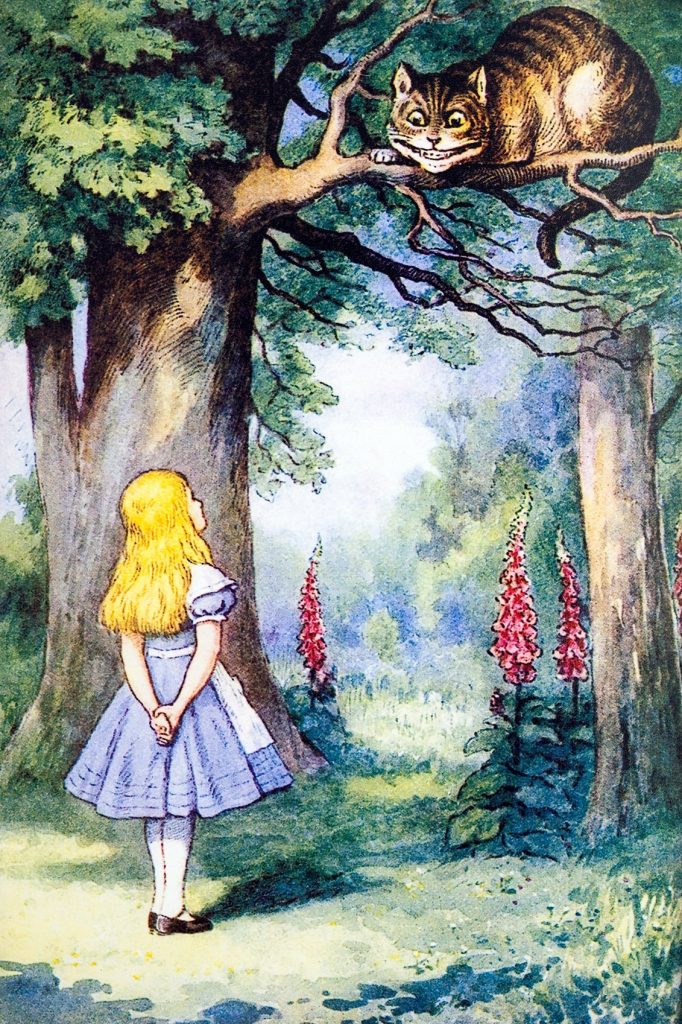0
1
0
Alice came to a fork in the road and saw a Cheshire cat in a tree.
Lewis Caroll, “Alice in Wonderland”
“Which road do I take?” she asked.
“Where do you want to go?” was his response.
“I don’t know,” Alice answered.
“Then,” said the cat, “it doesn’t matter.”
Tough decisions are difficult and overwhelming. How do we make big life changing decisions when the choices are different but appear equally good?
This article was inspired by a “Life Kit” podcast: Faced With A Tough Decision? The Key To Choosing May Be Your Mindset
What Makes a Decision Tough?
In March 2018, living in Vancouver, Canada, I was mostly satisfied with the way I was piecing my life together after a recent job loss and 34 year marriage break up. I had just returned from a most wonderful road trip along the Garden Route in South Africa with my first ever love from when I was 15 years old.
Do I stay in Vancouver where I am comfortable and established? Or do I return to the land of my birth after a 28 year absence to start building a new life for myself in a relationship with a person who I really like, but hardly know?
Big Decisions are not Necessarily Tough Decisions
Big decisions, while often life altering, may be easy to make. For example accepting a job to pursue the career we always wanted. That is, one of the choices in the decision has a clear and significant upside.
Tough decisions on the other hand are when the choices are on par. The specific pros and cons of each choice are most likely different, but when considered overall, no one choice stands proud of the others.
Tough Decision Choices are Not Equal
If the decision choices were equal, we could simply draw straws to select a choice. Not so with tough decisions. Even though the choices are equally attractive, they are significantly different. Each choice will take us down a totally different path. For example, choosing between to very different careers. Each choice has its own unique set of opportunities and challenges.
Do Not Optimise or Maximise
Resist the temptation to drill down into the minutia of the pros and cons of each choice to eek out a few extra points. Making tough decisions is not an exact science and drilling down to the nth significant digit attempting to rank the choices could actually mislead us. For example, factoring in the cellphone allowance amount when deciding between two similar job offers, but in different towns. Does a decision of which town to settle in based on a cellphone allowance amount make sense? We evaluate the pros and cons only of the things that matters. The criteria of the choice needs to be relevant to the decision.
Tough Decision Strategies
Tough decisions are uniquely personal, a choice some of us find appealing, others may not. Others cannot tell us which choice to pick, but can help us think though the choices. Here are some useful suggestions for thinking through tough decisions.
Do Not Leave Out the Initial Steps
I see these initial steps as necessary for all significant decisions be they big and / or tough.
- What Matters: Identify what matters to us in this decision. What are our uniquely personal criteria that determine the pros and cons of each choice.
- Pros and Cons: This is the activity of listing out all the pros and cons of each choice that are relevant to the decision.
- Evaluate the Choices: Evaluate the pros and cons of the choices against each other.
If one choice stands out from the rest, that is our deciding choice. However, if top two or more of the top choices are on par with no clearly attractive option then we are faced with a “tough decision”.
Incremental Improvement Test
By applying a similar improvement to each of the choices of a decision and see how that changes the evaluation of choices. For example, how does the evaluation change if we hypothetically add an additional 10% to the salaries of similar job offers from different towns. If the improvements cause one choice to stand out, perhaps we have found our choice. All the more so if we are able to make that hypothetical improvement a reality.
Observe Our Feelings
Our emotions and feelings imprint deeply. We can all remember how we felt long after the details of a situation have been forgotten. This is also why first impressions are so important.
Experts say that our emotions strongly influence our decision making, often overriding all rational logic. By observing brain activity, researchers have accurately predicted the choice we will make up to ten seconds before we are even aware of having made it.
Where in the Brain are Our Emotions
Feelings about our decisions unconsciously well up from our Basal Ganglia and Amygdala which are located deep in our limbic brain. These feelings get filtered by our more recently evolved Prefrontal Cortex where our thoughts and rationalising ability are found. The rational and logical decision that we believe we are making was already made by the emotional part of our brain ten seconds ago.
How To Observe our Feelings
To observe our feelings we need to develop the ability to step back (get centred) and simply notice our thoughts and feelings instead of being wrapped up in the drama of our mind. To do this, we quiet our mind by sitting quietly and simply focusing on our breathing. When we notice that our mind has wondered off, we gently bring ourselves back to focusing on our breathing. In time, our mind clears and we begin to notice what is going on in our head rather than being immersed in it. Focus on being the witness who notices our thoughts and feelings without judgement. If we do not get to experience being the witness the first few times we attempt this, please persevere. Like learning any new technique, we improve with practice. This place of the witness is the same place people go to in deep prayer or meditation.
From this place of the witness, learn to distinguish between feelings and thoughts. Thoughts are our inner voice which chatters incessantly, passing judgment and expressing opinions on just about anything including our feelings. Simply notice our inner voice without differentiating what it is saying. Our purpose here is to focus on our emotions at their deepest level.
As the witness, for each choice, we imagine ourselves in the future. What do we feel? We may not be able to articulate our feelings, but they will have some measure of intensity, and and fall somewhere in the spectrum between feeling good and feeling bad.
Commit to Taking Charge of Your Life
Imagining ourselves in the future is an approach to proactively creating and determining our future. As we notice our feelings while pondering on our imagined futures, we will be gradually drawn to one.
This is the choice we are going to fully commit to, and the envisaged future we are going to strive towards.
Tough decisions are hard, they challenge us. They are our opportunities for growth. They unleash a power in each of us, the power to take charge and proactively create our life. As Ruth Chang said in her TED talk, “We have the power to create reasons for ourselves to become the distinctive people that we are.” We get to decide this from within ourselves, instead of looking outward for some indication. This is as empowering as it is scary. We create our own value for ourselves by making this commitment.
So we throw ourselves fully behind the decision we have have made, and press forward. No looking back, no “What If’s”. We focus all our energy and resources on carving out our future of our choice.
Afterward
I conclude this article after a walk along the Port Elizabeth Beachfront Promenade with my first love where we watched a school of dolphins frolicking close to shore. I’d be the first to admit that this journey has not always been easy, but it certainly has been rewarding, meaningful and fulfilling.
I am the master of my fate:
William Ernest Henley, “Invictus”
I am the captain of my soul.

